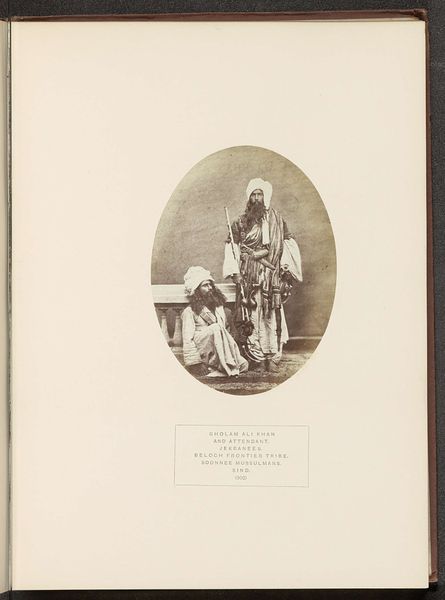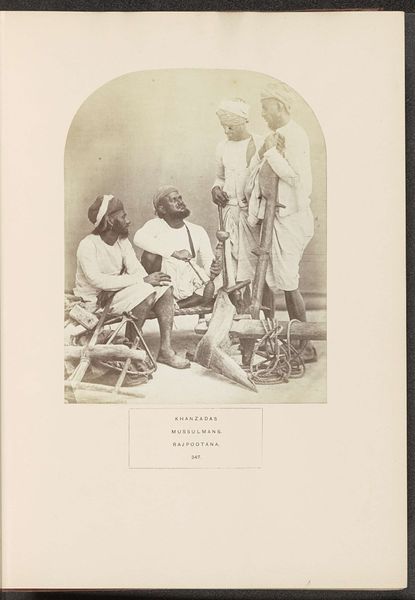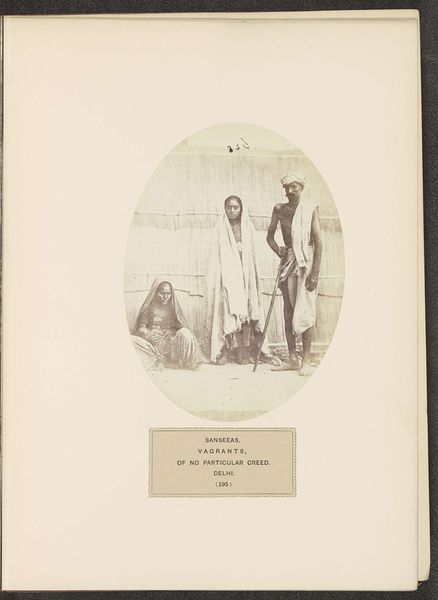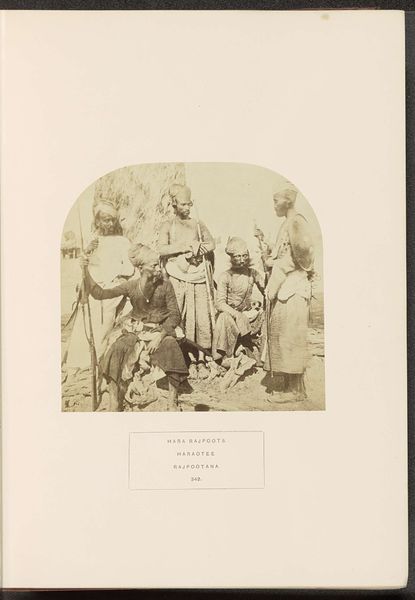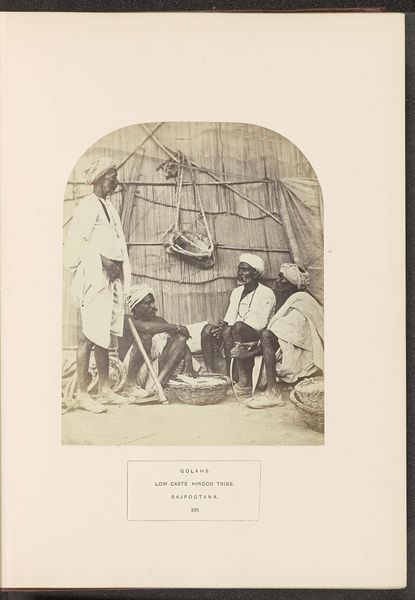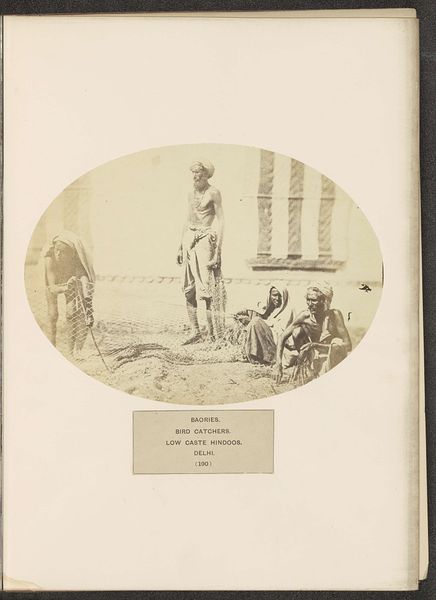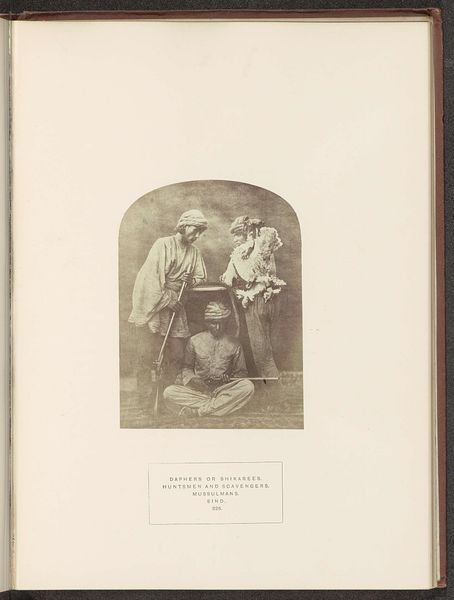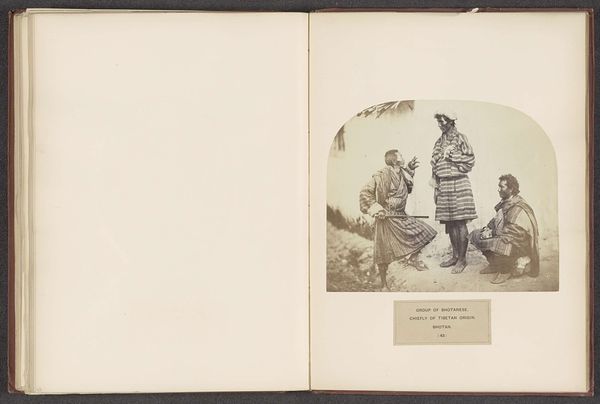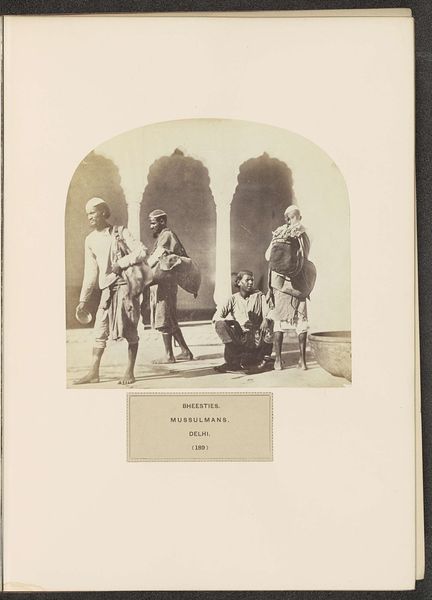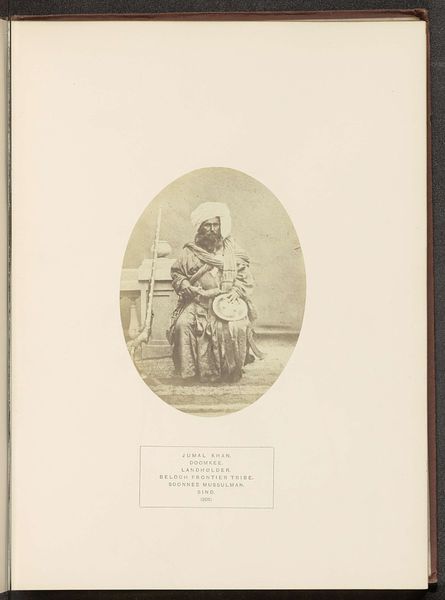
photography
#
portrait
#
photography
#
orientalism
#
genre-painting
Dimensions: height 154 mm, width 208 mm
Copyright: Rijks Museum: Open Domain
This photograph of two snake charmers in Delhi was made by Shepherd & Robertson, most likely in the second half of the 19th century, using a process called albumen print. The photograph is produced by coating paper with a layer of albumen, or egg white, and then sensitized with a silver solution to capture the image. In terms of materiality, albumen prints produce finely detailed sepia-toned images with a smooth, glossy surface. The process speaks to a moment in time where photography was becoming more widespread, but still involved a level of craft and skill, far from today's instant digital photography. This image carries significant social context as its creation was intertwined with British colonialism in India. The term ‘low caste’ written underneath the photo, reveals the social hierarchies imposed by the British. This kind of photography was used to document and categorize Indian society, reinforcing colonial power structures through visual representation. Understanding its creation and context allows us to recognize photography's role in shaping perceptions and perpetuating social inequalities.
Comments
No comments
Be the first to comment and join the conversation on the ultimate creative platform.
